The rise in the number of mafia bosses began during the illegal bootlegging days of the Prohibition era. The crime world in the past was much more dominant, with several mafia leaders, compared to recent days.
Griselda Blanco, Pablo Escobar, Al Capone, and Bugsy Siegel are some of the top names of the most powerful mafia bosses of all time.
They happen to be known to the world for their involvement in drug, mob, smuggling, and sometimes murder cases.
Let’s bring the 20 of the most powerful mafia bosses or mafia leaders of all time who received a reputation for their criminal involvement.
20. Veto Genovese (1897- 1969)
Content
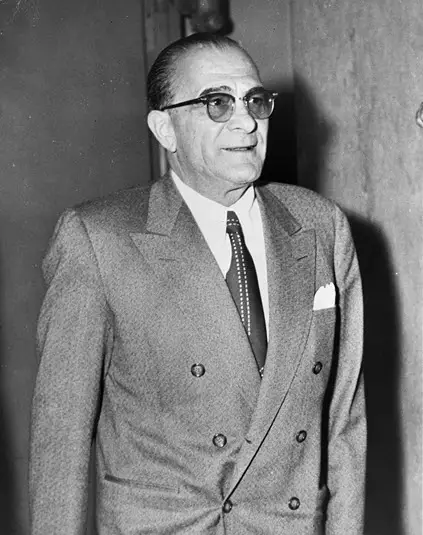
Vito Genovese, an Italian-born American mobster, was born on November 21, 1897. He was involved in one of the major wars, the Castellammarese War, that helped the rise of the Mafia in the United States.
Vito acted as the enforcer in the American Mafia and rose to power during Prohibition. He worked with Luciano of Luciano’s crime family towards the extension of the heroin trade at an international level.
Luciano’s crime family was renamed the Genovese crime family as Genovese began leading the crime family.
He also participated in the murder of Albert Anastasia and the attempt to murder Frank Costello to become the boss of the bosses. However, he managed to escape to Italy to avoid the charge of murder.
But he was arrested for narcotics conspiracy charges in 1959 and was sentenced to 15 years in prison.
Genovese bribed some fascist party members, became a friend, and provided Cocaine to Galeazzo Ciano, the son-in-law of Benito Mussolini.
When World War 2 ended, he donated almost 4 million dollars to Mussolini’s party and was awarded the Order of Saints Maurice and Lazarus.
In September 1943, when enemies invaded Italy, he switched sides and offered to help the U.U.S.rmy. He was appointed as the interpreter officer at the U.U.S.rmy headquarters in Naples.
Genovese died from a heart attack on February 14, 1969, at the United States Medical Center for Federal Prisoners, Missouri.
19. Paul Castellano (1915-1985)
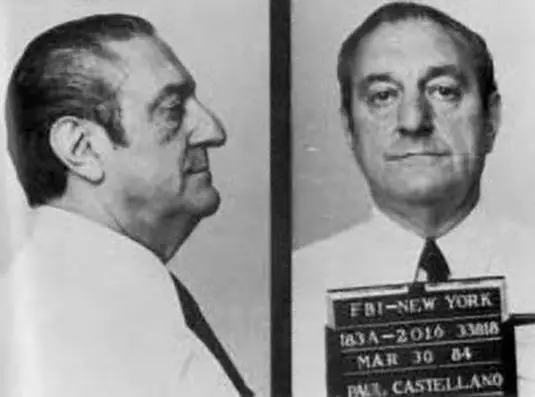
Constantino Paul Castellano, also known as “The Howard Hughes” of the Mob and “Big Paulie,” was born on June 26, 1915. He was an American crime boss succeeding Carlo Gambino as head of the Gambino crime family.
Castellano was one of the members of the family Mangano in the 1940s. During this, he attended a meeting at Apalachin – New York, which the police raided and listed him as one of the sixty-one highest-ranking mobsters arrested.
He spent a whole year in prison for refusing to answer questions and, in 1960, was kept in prison for 5 more years on the charge of holding back necessary information.
Castellano overtook illegal businesses, turning them into legitimate ones, and was taken as a businessman rather than a mobster.
He and his son Philip invested money in the Scara-Mix Concrete Club, a club with members that The Commission selected for handling contracts between two million dollars to fifteen million dollars.
He had his daughter’s boyfriend Vito Borelli murdered in 1975 after he knew about Vito comparing him to the famous owner of Perdue Farms, Frank Perdue.
Castellano built a 17-room mansion in Todt Hill on Staten Island designed to resemble the White House in Washington, D.C.
It displayed Carrara marble, an Olympic-size swimming pool, and an English garden. He wore satin and silk dressing gowns and velvet slippers around the house instead of managing the business.
On March 30, 1984, Castellano was charged with numerous charges, including extortion, narcotics trafficking, prostitution, theft, and DeMeo murders.
However, he was arrested on July 1, 1985, for loan sharking and tax evasion but pleaded not guilty.
He died on December 16, 1985, after being shot several times in front of the Sparks Steak House in Manhattan.
18. Sam Giancana (1908- 1975)
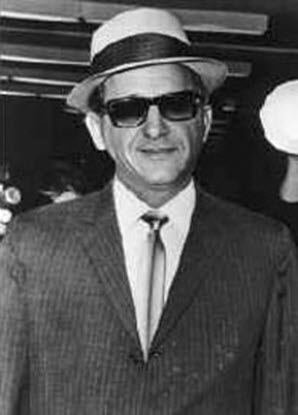
Samuel ( Sam ) Mooney Giancana – an infamous American mobster, was born to Italian immigrant parents on May 24, 1908.
He got involved in a group named the Chicago Outfit around the end of the 1930s, where he worked as an active member in Chicago’s African-American system for the lottery payouts for the group in the early 1940s. His dedication and activeness towards the group made him the group’s boss in 1975.
Sam became a member of 42 Gang and was in charge of unlawful gambling, forming rackets for political issues, and distributing liquor. All these acts took place between the 1940s and 1950s in Louisiana.
In 1960, Giancana was chosen by the CIA to assassinate Fidel Castro – the Cuban leader and was responsible for the victory of John F. Kennedy that took place in the same year’s presidential election.
However, he was later associated with Kennedy’s assassination and other Mafia leaders, including Carlos Marcello and Santp Trafficante Jr.
In 1966, Giancaa fled to Mexico to avoid the grand jury questioning the arms smuggling to the Middle East for the Israeli Mossad via Panama.
He was arrested in Mexico and, in 1974, was sent away to the U.S.
Giancana died, on the 19th of June, 1975, after being shot seven times in the head and neck.
17. Joe Masseria (1886- 1931)
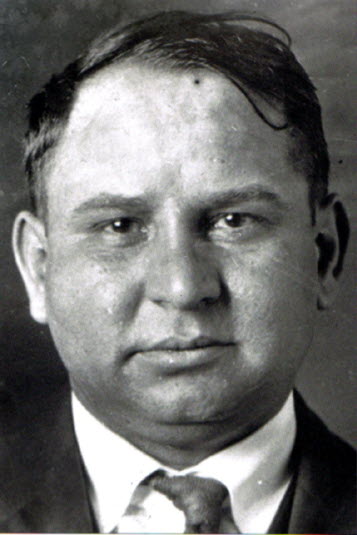
Giuseppe “Joe the Boss” Masseria, an Italian- American Mafia boss, was born on January 17, 1886. He belonged to a family of tailors who later became the boss of the Genovese crime family from 1922 to 1931.
Joe joined the Morello Crime family of Harlem in 1902. He was first arrested for a third-degree burglary with a charge of 4 to 6 years imprisonment on May 23, 1913.
By the 1920s, Masseria and his boss Salvatore D’Aquila went against each other for power, where Salvatore ordered his gunman Umberto Valenti to assassin Masseria.
Masseria was able to escape the attack becoming the new boss of the rival Morello family. During the attack, Vincenzo Terranova, the boss of the Morello family, was killed, while Morello’s underboss Silva Tagliagamba was brutally wounded. Valenti was held responsible for both incidents.
Masseria was again attacked on August 9, 1922, while walking out of his apartment. But, he could escape this attack as he ducked into a store while the gunmen were shooting outside.
This gained him new respect among gangsters as “the man who can dodge bullets.” His reputation started rising as D’Aquila began to fall.
After becoming the head of the Morello family, Masseria was named “Joe the Boss.” He was chosen to replace D’Aquila as the new capo dei capi after D’Aquila’s murder. He then applied pressure on the other mafia gangs for financial tributes.
He called out Nicolo Schiro for committing a transgression and demanded ten thousand dollars to step down as the leader of his mafia crime family. This led to the Castellammarese War between 1930 and 1931.
He fought in the Castellammarese War in 1930 to take over the criminal activities in New York City. The war ended on April 15, 1931, with his murder by his lieutenant, Charles “Lucky” Luciano, in an agreement with his rival Salvatore Maranzano.
16. Joseph Colombo (1923- 1931)
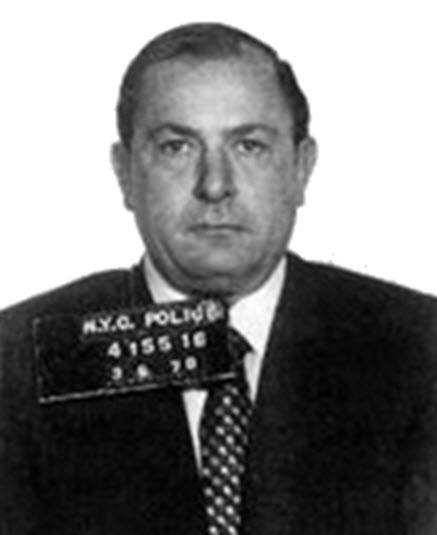
Joseph Anthony Colombo, the boss of the Colombo crime family, was born on June 16, 1923, in New York City. He was one of the Five Families of the American Mafia in New York.
He created the Italian-American Civil Rights League in 1970, followed by the first Italian Unity Day rally held in Columbus Circle. These rallies were created to protest against the persecution of Italians.
The Civil Rights League and Colombo gained popularity, leading to him appearing in numerous TVT.V.nterviews, speaking events, and fundraisers.
Likewise, Paramount Pictures began filming the Godfather with the help of Colombo and the league. However, the film removes a few terms such as “Mafia” and “Cosa Nostra.”
Colombo, like his father, joined the Profaci family and became a capo and one of the top enforcers. He was ordered to kill Gambino and Lucchese by Magliocco after the death of Profaci, to which he revealed the plan to the rivals.
The Commission, in return, spared his life but forced him to retire from the position of Profaci’s boss and made him pay 50000 dollars.
Colombo died on May 22, 1978, due to a Cardia arrest at St. Luke’s hospital in New York.
15. Dutch Schultz (1901- 1935)

Dutch Schultz, an American mobster, was born on August 6, 1901. He was based in New York and was involved in crime-related activities between the 1920s and 1930s.
Dutch went against the Commission in 1935 and attempted to kill prosecutor Thomas Dewey. Dewey was leading the prosecution against two major tax evasion trials for which Dutch was held responsible.
He had requested the Commission to grant him the permission to kill Dewey, to which they refused.
While working at a nightclub, Dutch started involving himself, from robbing craps games to burglary. He was also sent to prison for attempting to break into an apartment.
When he was 18, the mugshot was taken and published in the New York City Gangland book in 2010.
He began smuggling liquor and beer from Canada to New York after his release. He gained fame as “Dutch Schultz” during this period.
In the 1920s, Joey Noe worked as a bouncer at the hub social club. Joey worked with John and Joe Rock, running a bootlegging operation in the Bronx.
However, they kidnapped one of their partners, Joe Rock, who refused to buy beer. They hung him by his thumbs with a meat hook and wrapped a bandage smeared with discharge from a gonorrhea infection over his eyes.
After that, their gang met only a few oppositions, and they expanded across the entire Bronx and made them very wealthy.
Noe-Schultz operation flourished so much that they were the only gang to go against the Mafia’s Five Families. They got into a bootleg war with New York’s Irish Mob, led by Jack “Legs” Diamond.
He also had to deal with conflicts within his gang when Vincent Coll, one of Schultz’s enforcers, demanded to become an equal partner. They received a flat salary instead of the customary percentage from the take.
Dutch Schultz put his hand into the Otto “Abbadabba” Berman and the Harlem number rackets to find new income sources with the Prohibition’s end. Along with this, he started extorting New York restaurant owners and workers.
He worked through a hulking gangster Jules Modgilewsky, also known as Julie Martin, and made deals with Waiters Local 16 and Cafeteria Workers Local 302 to extort money.
Dutch died on October 24, 1935, after receiving the last rites from a Catholic priest.
14. Vito Rizzuto (1946-2013)
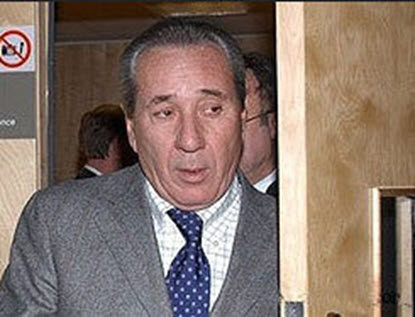
Vito Rizzuto, also known as “Montreal’s Teflon Don,” was the leader of the Sicilian Mafia in Canada. The Italian-Canadian crime boss was born on February 2, 1946.
Under the order of Joe Massino of Bonanno, Rizzuto was involved in killing three rival capos in 1981 in New York City. He was questioned by a Brooklyn federal grand jury and was given a ten-year prison sentence in 2004 but was released in 2012.
Vito married the daughter of mobster Leonardo Cammalleri, Giovanna Cammalleri, and gained power over a criminal empire by importing and distributing heroin, cocaine, and hashish in Canada.
Similarly, he was also involved in the laundering millions of dollars, lending millions through loansharking operations, and gaining from illegal gambling, fraud, and contract killings.
In 1972, he was arrested for the charger of planning to commit arson of Renda’s hair salon and again in 1988, for plotting the import of Hashish to Canada.
Rizzuto died on December 2, 3013, due to complications from pneumonia induced by lung cancer, and around 800 people attended a funeral at the Madonna della Difesa.
13. Frank Scalice (1893- 1957)
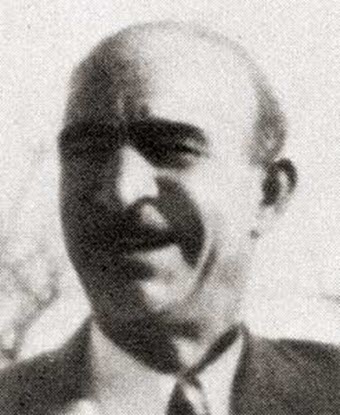
An Italian-American Mobster, Frank Scalice, was most active in New York City. He was born on September 23, 1893, and was famously known as “Don Ciccio” and “Wacky.”
In 1930, Scalice became the new boss of the Gambino family after the murder of Mineo and Stefano by the Castellammarese Silicans led by Salvatore Maranzano. He became a firm friend and supporter of Maranzano in the Castellammarese War.
Mazaranzo organized the Five Families and peace as the end of the war. However, Lucky Luciano forced Salice to resign as family boss after the murder of Maranzo in 1931 and was replaced by Vincent Mangano.
In 1945, Scalice helped mobster Bugsy Seigel open the Flamingo Hotel and Casino in Las Vegas.
After the death of Manganos, Anastasia became the boss of the family, and Scalice became the underboss.
Scalice died on June 17, 1957, after being shot by the two gunmen in the Bronx.
12. Salvatore Riina (1930- 2017)
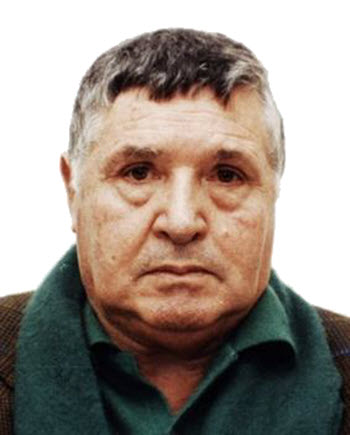
Salvatore Riina, an Italian mobster, was chief of the Sicilian Mafia. Born on November 16, 1930, he was also known as Toto’ u Curtu.
He was infamous for his brutal murder campaign with assassinations of Antimafia.
Riina became the head of the Corleonesi criminal organization in the mid-1970s after succeeding Luciano Leggio. During this, he gained dominance with numerous violent acts that led to police targeting his rivals.
After the death of Michele Navarra in 1958, Luciano Leggio took over as the new leader of the Mafia family.
Along with the three gunmen in Navarra’s murder- Calogero Bagarella, Riina, and Bernardo Provenzano, Leggio increased the needed force of the Mafia family.
They spent years finding and assassinating many of Navarra’s supporters and hid themselves to escape arrest.
In 1969, Riina and Leggio were tried for the earlier murders but were cleared of guilt by intimidating the witnesses and the honorable jurors.
During the Second Mafia War, Riina and Leggio killed almost a thousand people as they wiped out their enemies along the way.
Riina had mutually beneficial relationships with local political figures like the mayors of Palermo Vito Ciancimino and Salvatore Lima.
Buscetta talked to the anti-Mafia judge Giovanni Falcone and became his informant.
He revealed that the Mafia was a single organization led by a Commission and established that the highest Mafia members were involved in all the organization’s crimes.
475 Mafia members were arrested, and 333 were convicted in the Maxi Trial.
To divert attention from the investigation, Riina ordered the murder of 17 people and left 267 wounded. This came to be known as the “Christmas Massacre.”
Riina died of Cancer on November 17, 2017.
11. Sonny Franzese (1917- 2020)
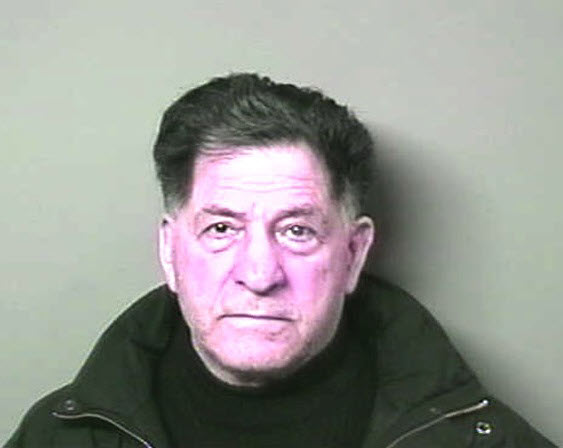
John “Sonny” Franzese Sr., born on FebrFebruary 617, was an Italian-American mobster.
His career began in 1930 and revolved over eight decades. He was the underboss of the Colombo family until he was sentenced to 50 years in prison for organizing a series of bank robberies.
Sonny became the underboss again in 2005 after being paroled in 1978 and re-jailed six times on parole violations. He was again convicted of extortion in 2011 and spent eight years in prison.
When he was released on June 23, 2017, aged 100, he was the oldest federal prisoner in the United States. He was the only centenarian in federal custody.
He died on February 24, 2020, at the age of 103.
10. Griselda Blanco (1943 – 2012)
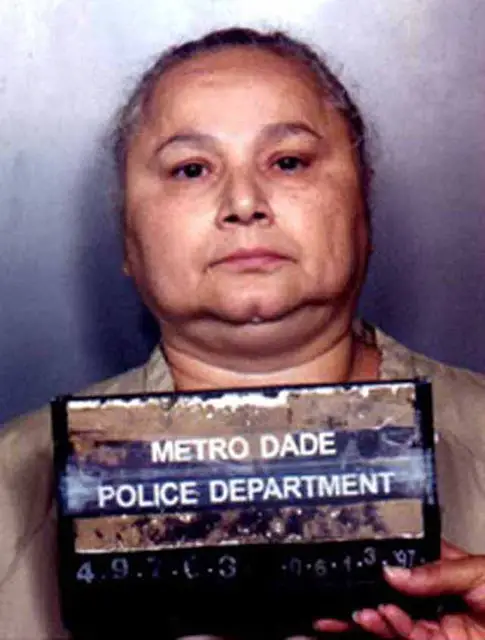
Griselda Blanco, one of the most infamous and feared women mobsters, began with prostitution and pickpocketing and ended up booming the cocaine trade. She was famously known as the Black Widow and was born on February 14, 1943.
A Colombian drug lord controlled the Medellín Cartel and became a Miami-based cocaine drug trade pioneer.
She was active in the underworld with several names, such as La Madrina, the Queen of Narco-Trafficking, the Black Widow, and the Cocaine Godmother, between the 1980s and the early 2000s.
She was involved in 200 murders while smuggling cocaine from Colombia to New York, Miami, and Southern California. Blanco, at her peak, was one of the wealthiest women and the most powerful drug kingpins in the world.
She earned $80 million a month during the ’70s and ’80s and became the first-ever billionaire female criminal with a $2 Billion net worth as of 2012.
She married four men and bore four children. With the multi-billion dollar drug trafficking empire, she became one of the deadliest women of all time.
However, her mafia acts ended on September 32, after police shot her dead.
9. Bugsy Siegel (1906 – 1947)
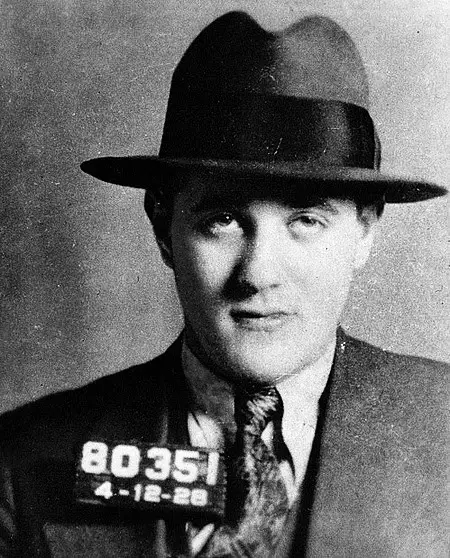
Bugsy Siegel, one of the first front-page celebrity gangsters, was a Jewish-American mob involved in the racket, murder, and illegal gambling.
Siegel, who loved gambling, changed illegal gambling into a legal one and was also known for being a mafia hitman and enforcer.
He also established the Las Vegas Strip, where he and his men robbed tourists for years until death. His name also came in several bootlegging affairs with his close associate, Meyer Lansky.
In 1936, Siegel moved to California, where he began building casinos for the East Coast’s mob bosses, started campaigning rackets, favored many Hollywood celebrities, and earned fame.
A hitman shot Siegel dead on June 20, 1947, at his girlfriend’s house in Beverly Hills.
8. Pablo Escobar (1949 – 1993)

Pablo Escobar, a Colombian drug trader and famous narcoterrorist, founded the Medellín Cartel. He was known as The King of Cocaine, The King of Crack, El Padrino, and El Patrón.
He started his criminal journey around the 1970s when he sold illegal cigarettes and fake tickets for the lottery, involved himself in vehicle theft, and kidnapped people for ransom.
With his experience working under other mafia bosses, he established his Cartel in 1976 and named it the Medellín Cartel.
The cartel made its first smuggling routes to the United States to distribute cocaine, eventually becoming the most successful cartel to supply in the U.S.
They would supply at least 70 to 80 tons of cocaine daily from Columbia. This made Escobar and his cartel one of the wealthiest in the world.
His business, however, created the battle between rival cartels and killed police officers, locals, judges, and politicians.
Escobar also stepped into the 1982 Colombian parliamentary election and was elected as an alternate member of the Chamber of Representatives.
He earned fame by working on community projects to construct houses and football fields.
He was convicted of planning the Avianca Flight 203 and DAS Building bombings. In 1991, he surrendered to the police and was sentenced to imprisonment for five years.
He escaped jail in 1992, and a nationwide search was conducted. Escobar was shot dead by the Colombian National Police on December 2, 1993.
7. Albert Anastasia (1902 – 1957)
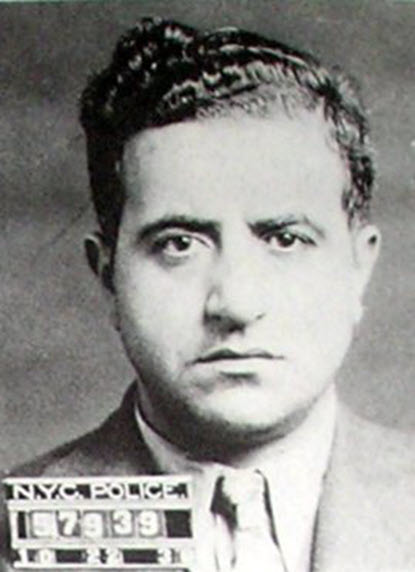
Italian origin, Albert Anastasia, also known as the Earthquake or the Mad Hatter, was one of the most ruthless and feared Italian -American crime bosses, mobsters, assassins, and gangsters in American history.
Anastasia was appointed underboss and head of his Brooklyn rackets when Salvatore Maranzano and Joe Masseria were killed during the Castellammarese.
By 1951, Anastasia had transformed New York Harbor into a Crime zone. At the time, he served Vincent Mangano and continued for 20 years as an underboss. When Mangano was killed, he became the new boss of the Mangano crime family.
The conspiracy against Anastasia was aggressive for killing his boss, so Vito Genovese with Carlo Gambino planned on killing him. He was killed in a barbershop in Manhattan on October 25, 1957.
6. Carlo Gambino (1902 – 1976)
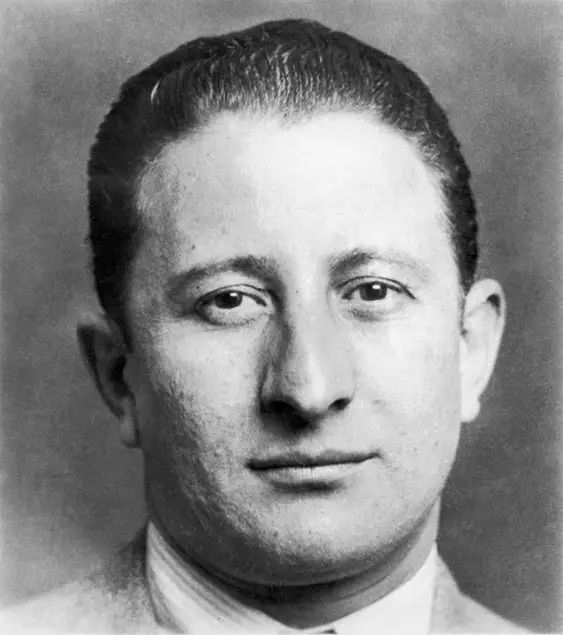
If there was any crime boss who ruled the crime world for a long time and still met his death without a bullet, it was Carlo Gambino. Carlo Gambino was an Italian-American mafia belonging to the Gambino crime family.
He had earned several nicknames such as The Godfather, Don Carlo, The King of the United States Underworld, The Dictator of New York City, and The King of the American Mafia.
Gambino carried out his criminal journey at 19 when he was inducted as an assassin into the Cosa Nostra in 1921. Along with two other fellows, Bugsy Siegel and Frank Costello, he joined a ‘Young Turks’ gang led by Lucky Luciano.
In 1957, Gambino ordered the assassination of Albert Anastasia and became the head of the Mangano crime family.
He then changed the original name Mangano to Gambino family and took charge of loan sharking and illegal gambling.
After the two major events, the Apalachin Meeting of 1957 and Vito Genovese’s imprisonment in 1959, he became more powerful. He ruled as one of the most potent mafias until his death on October 15, 1976.
5. Frank Costello (1891 – 1973)
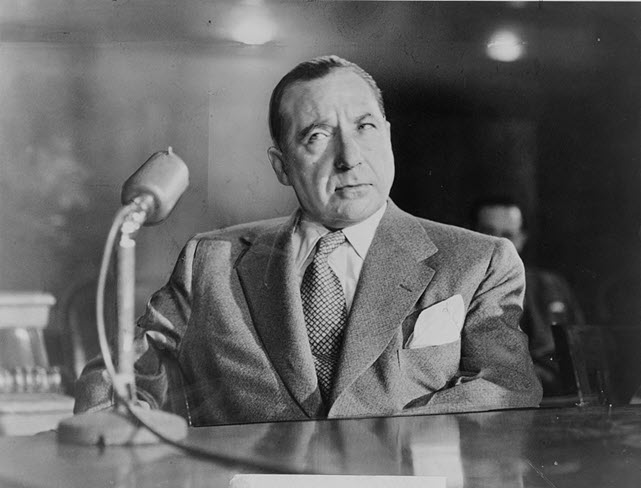
Frank was born in Cosenza, Italy, and grew up in East Harlem. He was introduced to the crime world by his brother, Edward, at 13, when he began with petty crimes.
He had already served in prison in 1908, 1912, and 1917 for assault and robbery. In the 1920s, he was involved in gambling, bootlegging, and building operations in New York and the South alongside Lucky Luciano.
Luciano’s association helped him gain political influence on the local level. When Luciano went to jail for operating prostitution in 1936, Costello became the head of the Luciano crime family, later changed to the Genovese crime family.
He had risen at the height of his criminal career and became an Italian-American Mafia gangster and crime boss. He gained his popularity through his nickname “The Prime Minister.”
In the 1950s, Costello faced several problems with the law as he was frequently taken in and out of jail for contempt and tax evasion by the USU.S.overnment.
He had also developed a solid alliance with Albert Anastasia. However, in 1957, an assassination attempt was made upon them, in which Costello survived while Anastasia was killed. Vito Genovese, the rival New York mob boss, was behind this scheme.
Though he lost some dominance after the attack, he continued his operation. He eventually met his end with a heart attack on February 18, 1973.
4. Lucky Luciano (1897 – 1962)

Lucky Luciano was a great influencing mafia king in American history and the first gangster who legitimized mafia power in America.
Charles “Lucky” Luciano was also an Italian-born mob boss who started his crime by joining the Five Points gang. His power rose when he became the top assistant in Masseria’s criminal organization after the Castellammarese War.
In 1931, he established The Commission and became America’s father of the modern organized crime.
He proposed the Commission maintain its power over all the families and stop future gang wars. The other bosses appreciated his idea and approved it.
The modern Genovese crime family then received the first official heir, Luciano. His dominance in the mafia world grew even further because of his contribution to developing the National Crime Syndicate.
However, his fortune dropped when District Attorney Thomas E. Dewey, with his years of investigation, brought him to trial in 1936. He was found guilty of prostitution rackets and was sentenced to 30 to 50 years in jail.
Luciano helped the USU.S.avy’s security measures during World War 2, which resulted in the shortening of his prison stay. Thus, he was brought to Italy, where he continued his drug business.
He died from a heart attack at Naples International Airport on January 26, 1962.
3. John Gotti (1940 – 2002)

Apart from his criminal activities, John Gotti was famous for being called the “The Dapper Don.” His swagger and expensive suits always roamed around the media, making him a tabloid celebrity.
John Gotti, the American mobster, was the boss of the Gambino crime family based in New York City. He began his criminal career at 12 when he started working for Carmine Fatico.
Even after joining the Gambino crime family, Gotti could not stop his heroin business, despite knowing it was against the family ethics.
The Gambino family discovered his business heroin only in 1985, which led to chaos.
Gotti had to plan and organize the murder of Paul Castellano to save him and his business team. The murder of Paul led to him becoming the head of the Gambino family.
During the 1980s, Gotti was the most powerful crime boss in America, called the “Teflon Don.” He earned millions through criminal and illegal businesses, including loan sharking, prostitution, illegal gambling, and narcotics distribution.
He often avoided prison throughout the 1980s, but the Feds continued chasing him and built a strong case against him. Gotti was finally locked in jail in 1992 for several crimes involving five counts of murder, tax evasion, and racketeering.
Salvatore Gravano, Gotti’s underboss, helped the FBI put Gotti behind the bar. Though Gotti was in jail, he continued his crime business through his brother Peter and son Jr. He died of throat cancer in 2002.
2. Frank Lucas (1930 – 2019)
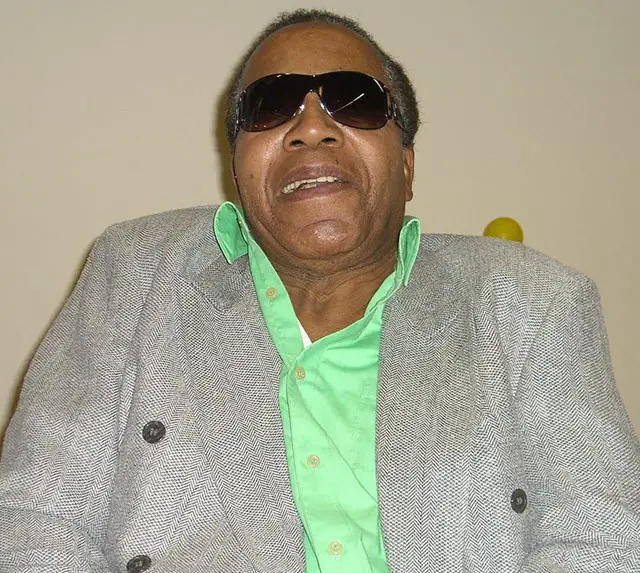
Frank Lucas was an American drug smuggler trained under Harlem mob boss Bumpy Johnson from his teenage years. He worked for Johnson for 15 years.
He broke the monopoly the Italian-American mob bosses had on the drug ring and developed his drug ring, which became one of the most significant rings of the 20th century.
Lucas became a powerful drug lord in Harlem in the 1960s and 70s through his heroin trade. He cut out the middleman by contacting the direct suppliers in Southeast Asia to buy the drug.
By the 1970s, Lucas leveraged a lavish lifestyle, earning $1 million daily from his “Blue Magic” heroin.
It caught the eye of authorities, and Lucas was convicted of drug charges after they raided his New Jersey house in 1975.
He was sentenced to 70-year prison in 1976 but served only five years and was set free. Due to his cooperation on drug cases as a state witness, he could shorten his prison time.
Lucas died on May 30, 2019, of natural causes.
1. Al Capone (1899 – 1947)
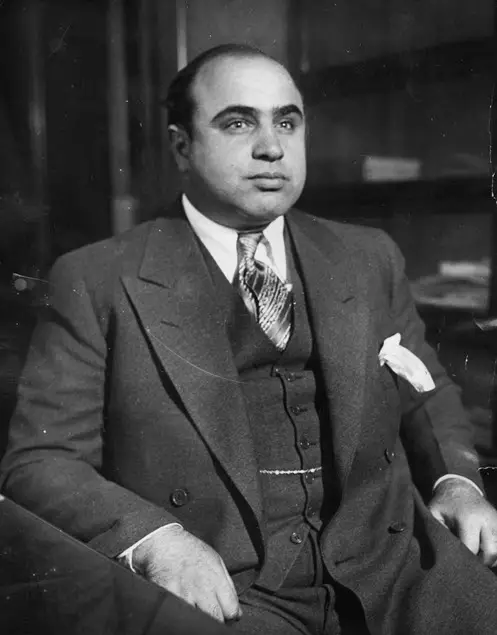
Al Capone was an American mafia boss and businessman who established his crime empire through several criminal activities in the 1920s. He was the most powerful and dangerous crime boss in the world.
His criminal affair started when he became a member of the Five Points Gang and became a bouncer in many organized crime premises in his early twenties.
In his initial career, his mentor was Johnny Torrio, who helped him grow in bootlegging. He and Torrio co-founded and became the leader of Chicago Outfit, previously known as the Black Hand.
Still, his fall and rise continued due to the North Side Gang. Similarly, he was also involved in smuggling, prostitution, and bootlegging liquor, even after the death of Torrio.
He bribed police officials, judges, and the Mayor of Chicago, and his domination prevailed in the USU. She also donated funds to several charity groups, which earned him the nickname “modern-day Robin Hood.”
He was tagged as “Public Enemy No.1” when the Saint Valentine’s Day Massacre happened. In the event, he killed his seven gang rivals.
It boiled the media and public to pressure the USU.S.overnment to put Capone behind the bar.
Thus, Capone’s organized crime reign ended when he was sent to jail after being found guilty of five counts of tax evasion in 1931.
His imprisonment was decided for 11 years, but he was released in 1939 when he suffered from advanced syphilis.
Capone eventually died of a heart attack on January 25, 1947. At the height of his career, he received many names such as Scarface, Big Al, Big Boy, and Snorky.
Capone’s life has also been discussed in many books, articles, journals, and movies. The Untouchables (1987) was a blockbuster movie based on Capone’s life.
Conclusion
Mafia life is uncertain, and several gangsters met their end by either being shot or serving the prison for their lifetime. Only a few died naturally. This piece has only included ten mafia leaders and misses several others, such as Tony Accardo, Whitey Bulger, Sam Giancana, etc.
Anyway, who do you find the most powerful mafia boss enlisted in the article? Comment your thoughts below.

Griselda didn’t get shot by the cops, she got gunned down in front of a meat market. Ironically she started the movement of killing Plp by motorcycle drive by n that’s how she got killed
Anastasia was definitely not killed by Carlo Gambino. I’m not debating that Gambino put the hit out, but he himself definitely did not murder Anastasia.
You are so Right
I LOVED THEM ALL. I MEAN THEY ARE A PART OF HISTORY.. WHAT IS HISTORY WITHOUT THE AMERICAN MAFIA
Very true. Without the Mafia, we wouldn’t have Don Pendleton’s Executioner. Of course, only the first 38 were written by Pendleton, but check out the series. I have a hunch you will love it as much as I do. It’s only fictional, but fun.
As an Italian-American I hate the way Americans make these terrible people heroes and glorify their horrible life and values. They will turn your daughters into prostitutes and sell drugs to your children and laugh all the way to the bank while they make communion on Sunday. I am almost 80 years old and have fought that stereotype all my life.
They are awful human beings – it’s like saying the Hell’s Angels are good guys because they raise money for charity. That’s after they pulled my girlfriend out of my car and raped her on the street. She’s never been the same.
Get a grip. Sure it’s history, but why glorify it?
This lit no cap 🧢
This is an amazing Article👍🏿👍🏿👍🏿👍🏿👍🏿👍🏿👍🏿. 10/10 article, well done my friend. 😈😈💩💩💩 I loved this article!!!! 🥵🥵🥵🥵😂😂😂🥶🥶🥶🥶🥶👿👿👿👿👿😭😭😭🤪🤪🤪🤪🥰🥰🥰🥰🤣🤣🤣😁😁😁😁😁🥵🥵🥵🥵🥵🥶🥶🥶🥶🥶🥶😩😩😩😩😩😩😩😩😩😩😩that’s that wet.🥵🥵
there are powerful people in Iran who are called Pahlavan. These people have high physical strength and are very popular among the people, and many people respect and obey them. Pahlavan comes to the aid of the people with his group in times of need and defends the weak man. People are proud of Pahlavan and this makes Pahlavan have indescribable power in the society. There are currently five pahlevans living in Iran 1pahlevan Amin Farzaneh 2 pahlevan Pouya Paravi 3 pahlevan Morteza Ashrafi 4 Mohammad Mahmoudi 5 pahlevan Abolfazl Arab, the names of these people are mentioned in the book from Lati to Loti as contemporary pahlevans
What the hell !! The people you mentioned are just gangs . There are several big crime organization around the globe ( one of the most powerful ones is in Japan ) that is running by some badass Iranians. The people you mentioned as pahlavan are not as big as this criminal organizations that is running by this people dude.
My friend, the popularity and power of pahlevans is much greater than that of gangsters, mafias and yakuza. People love pahlevans very much and listen to pahlevans without taking money from them or without being threatened by them. pahlevan are stronger than gangsters and mafias and yakuza in both physical strength and popularity and wealth in society. Iranians who commit crimes in Japan or elsewhere are very afraid of the power of pahlevan Mohammad Mahmoudi, pahlevan Pouya Paravi and pahlevan Morteza Ashrafi and ……….
Iranians who commit crimes in Japan or elsewhere are very much afraid of the power of Pahlavan Mohammad Mahmoudi, Pahlavan Pouya Parvi, Pahlavan Morteza Ashrafi, and so on.
How thoughtful, you have got what it takes. Cant wait to read more on your site. Your friend in Bailby .